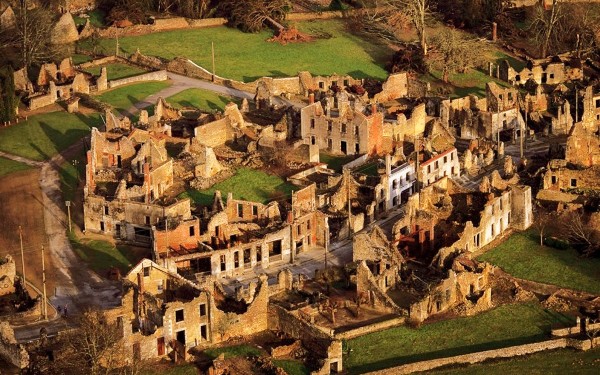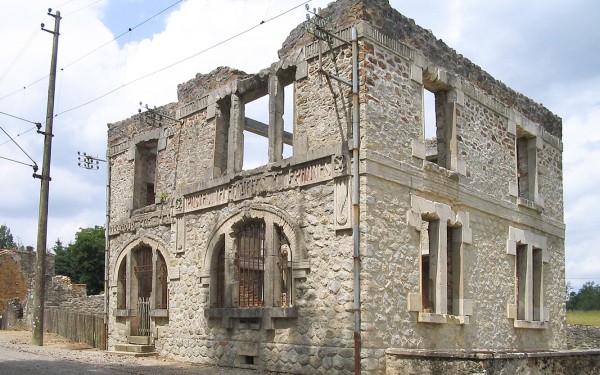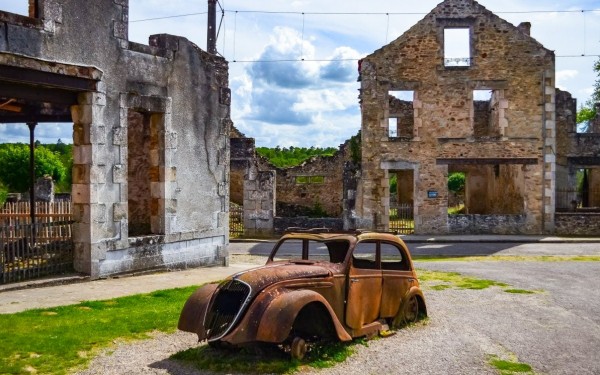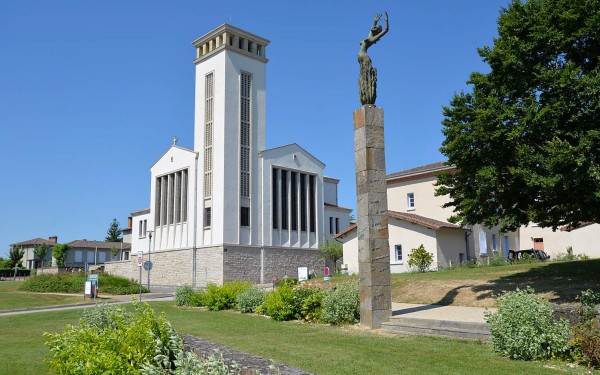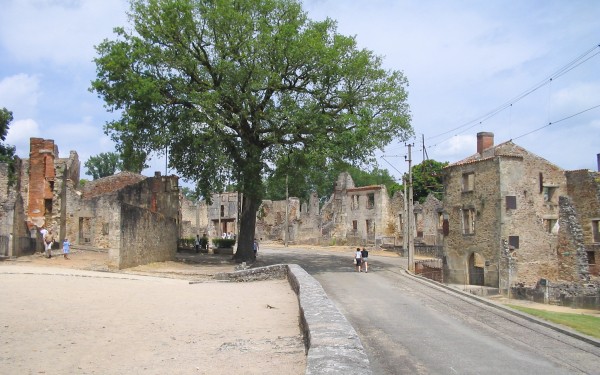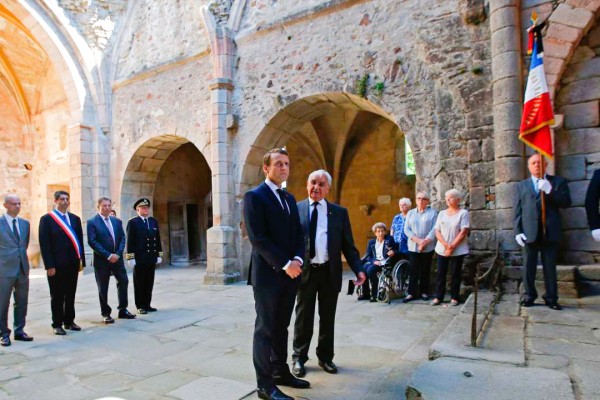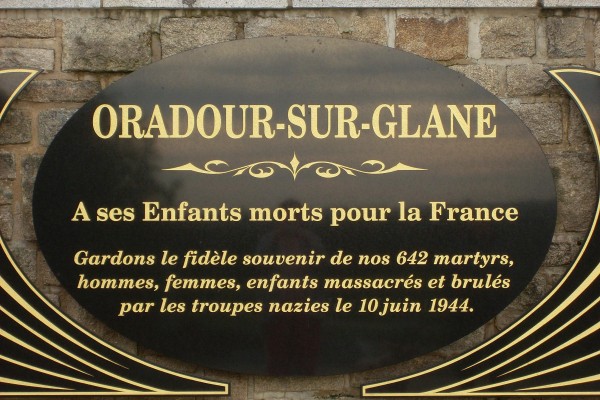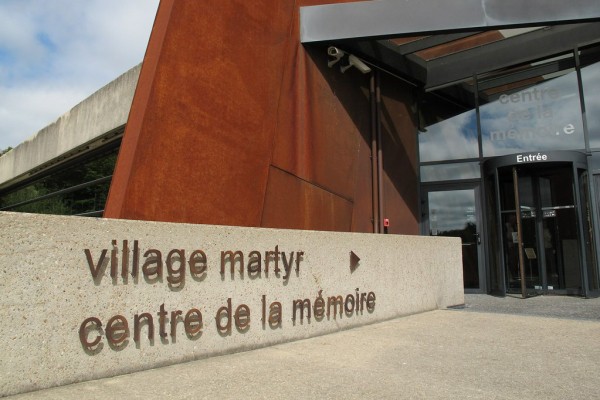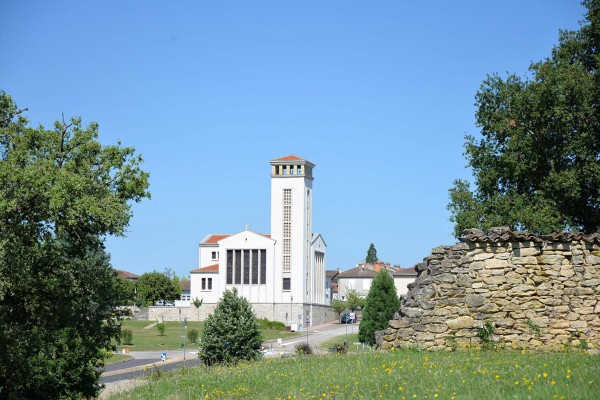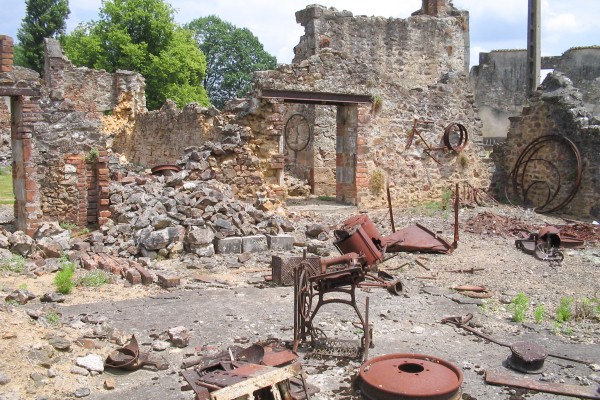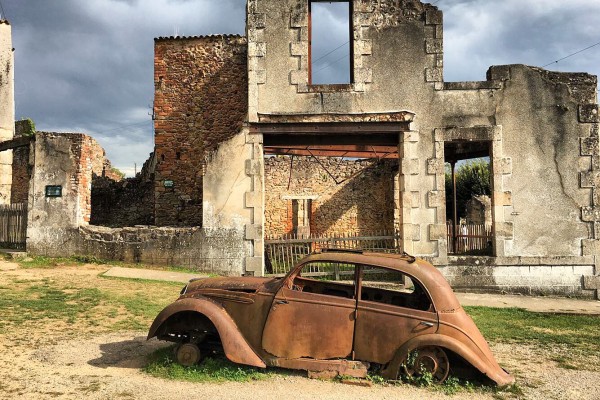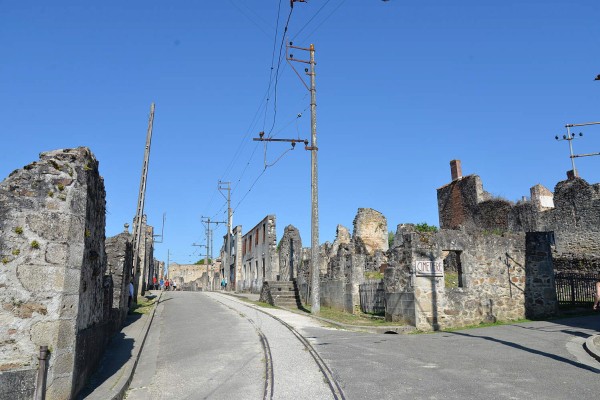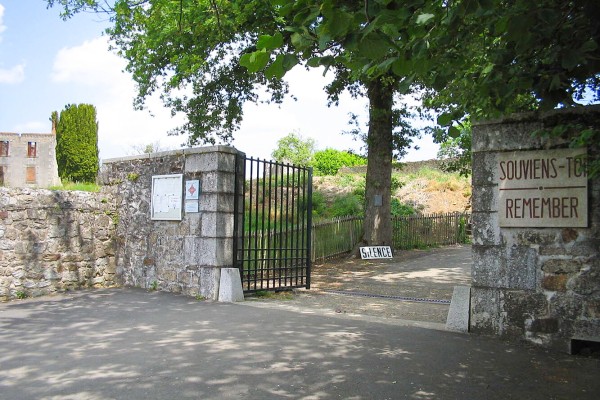The village of Oradour-sur-Glane is located northwest of Limoges and is an impressive monument to the atrocities committed by the Germans in the Second World War. Almost all the inhabitants of the village were killed by a SS unit on the 10th of June 1944 and the entire village was destroyed. There are few places in France were the horrors of WWII are as palpable as in Oradour-sur-Glane. Shortly after the war, the French President Charles de Gaulle visited the village and decided that the village should remain as the Germans had left it. It is still a poignant place to visit!
Centre de la Mémoire
In 1999, an underground museum was set up at the entrance of the village, the Centre de la Mémoire. On the basis of photographs, films and other audiovisual material, the history of the village and the Second World War is told. A long underground corridor goes from the museum to the center of the village, where you can go above ground again. The ruins of the village are still in the state it was left in on June the 10th, 1944. The houses and shops are now named after their owners and the sort of shop it used to be is also mentioned on the building. Everything is just as how it was left on that very fatal day. Even the doctor's car is still in the middle of the village square. Since then, the area has become a symbol for the atrocities of the Second World War. The empty, battered village also serves as a warning for future generations. 'Souviens-toi. Remember' is a sign at the entrance of the village.

